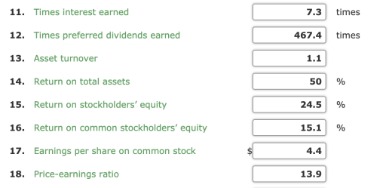
Its underwriting platform uses non-tradeline data, adaptive AI models and records that are refreshed every three months to create predictive intelligence for credit decisions. Ocrolus offers document processing software that combines machine learning with human verification. The software allows business, organizations and individuals to increase speed and accuracy when analyzing financial documents. Ocrolus’ software analyzes bank statements, pay stubs, tax documents, mortgage forms, invoices and more to determine loan eligibility, with areas of focus including mortgage lending, business lending, consumer lending, credit scoring and KYC.
Time is money in the finance world, but risk can be deadly if not given the proper attention. 1 Why most digital banking transformations fail—and how to flip the odds (link resides outside ibm.com), McKinsey, 11 April 2023. Embedded finance can help banks serve clients whenever and wherever a financial need may arise. AI can significantly improve the effectiveness of cybersecurity systems by leveraging data from previous threats and learning the patterns and indicators that might seem unrelated to predict and prevent attacks.
The following are 5 applications of Artificial Intelligence in banking:
However, AI is becoming increasingly important as organizations automate their day-to-day operations and understand the COVID-19 affected datasets. As AI systems become more advanced and autonomous, such as with GenAI, which can easily create convincing and potentially harmful content, banks are frontloading their AI governance efforts to ensure new AI risks are considered and managed appropriately, Sindhu said. “This is democratizing financial coaching or financial guidance” for customers, Sindhu said. Typically, these banking services are reserved for premium customers or people who can pay a fee. Other AI risks that are particular to the banking sector include issues revolving around security and privacy, risks related to workforce displacement by AI, and the risk of escalating AI investment required to keep pace with the digital transformation (see table 3). Banks are adopting generative AI, which promises earnings growth, improvements to decision-making, and better risk management.
That flexibility pertains to not only high-level organizational aspects of the operating model but also specific components such as funding. Banks and other financial institutions can take different approaches to how they set up their gen AI operating models, ranging from the highly centralized to the highly decentralized. Enova uses AI and machine learning in its lending platform to provide advanced financial analytics and credit assessment.

Benefits And Concerns Of AI In Banking
Reasons include the lack of a clear strategy for AI, an inflexible and investment-starved technology core, fragmented data assets, and outmoded operating models that hamper collaboration between business and technology teams. What is more, several trends in digital engagement have accelerated during the COVID-19 pandemic, and big-tech companies are looking to enter financial services as the next adjacency. To compete successfully and thrive, incumbent banks must become “AI-first” institutions, adopting AI technologies as the foundation for new value propositions and distinctive customer experiences. To establish a robust AI-powered decision layer, banks will need to shift from attempting to develop specific use cases and point solutions to an what to do if you missed the tax deadline enterprise-wide road map for deploying advanced-analytics (AA)/machine-learning (ML) models across entire business domains.
About S&P Global
The pressing questions for banking institutions are how and where to use gen AI most effectively, and how to ensure the applications are fully adopted and scaled within their organizations. Kensho, an S&P Global company, created machine learning training and data analytics software that can assess thousands of datasets and documents. Its data training software uses a combination of machine learning, cloud computing and natural language processing, and it can provide easily understandable answers to complex financial questions, as well as extract insights from tables and documents quickly. Traders with access to Kensho’s AI-powered database in the days following Brexit used the information to what is work in progress wip? quickly predict an extended drop in the British pound, Forbes reported. Scienaptic AI provides several financial-based services, including a credit underwriting platform that gives banks and credit institutions more transparency while cutting losses.
- Again, the unstructured nature of much of the data and the size of the data sets add complexity to pinpointing quality issues.
- However, banks must resolve several weaknesses inherent to legacy systems before they can deploy AI technologies at scale (Exhibit 5).
- An operating model that is fit for scale-up is cross-functional and aligns accountabilities and responsibilities between delivery and business teams.
- With thousands of practitioners at QuantumBlack (data engineers, data scientists, product managers, designers, and software engineers) and McKinsey (industry and domain experts), we are working to solve the world’s most important AI challenges.
- An example of AI in banking driving automation is Standard Chartered’s document processing system, called Trade AI Engine, which was developed with IBM.
They are more likely to stay with banks that use cutting-edge AI technology to help them better manage their money. AI is instrumental in helping alternate lenders determine the creditworthiness of clients by analyzing data from a wide range of traditional and non-traditional data sources. This helps lenders develop innovative lending systems backed by a robust credit scoring model, even for those individuals or entities with limited credit history.
They should approach skill-based hiring, resource allocation, and upskilling programs comprehensively; many roles will need skills in AI, cloud engineering, data engineering, and other areas. Clear career development and advancement opportunities—and work that has meaning and value—matter a lot to the average tech practitioner. The following paragraphs explore some of the changes banks will need to undertake in each layer of this capability stack. This archetype has more integration between the business units and the gen AI what is the depreciation tax shield team, reducing friction and easing support for enterprise-wide use of the technology. Gradient AI specializes in AI-powered underwriting and claims management solutions for the insurance industry. For example, the company’s products for commercial auto claims are able to predict how likely a bodily injury claim is to cross a certain cost threshold and how likely it is to lead to costly litigation.
